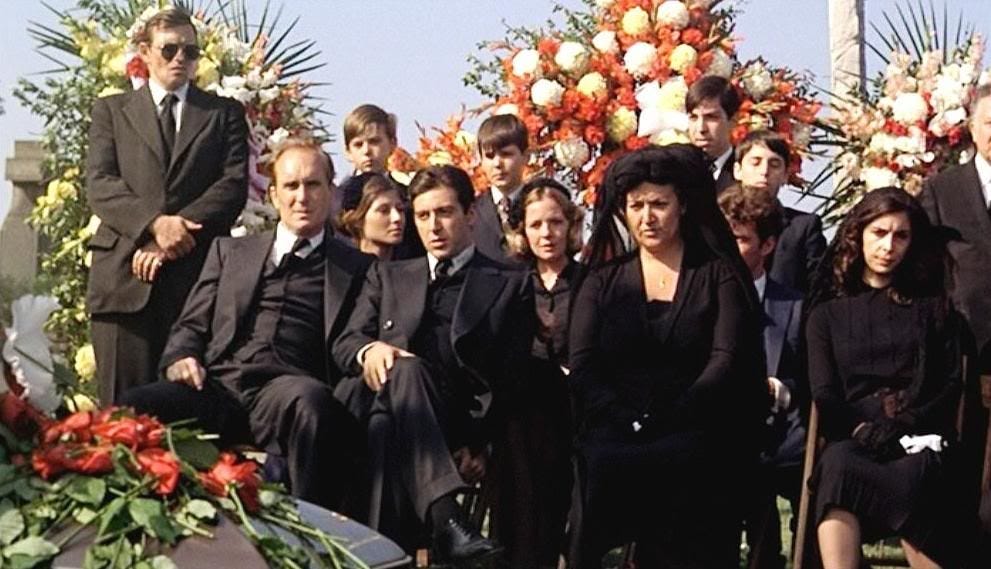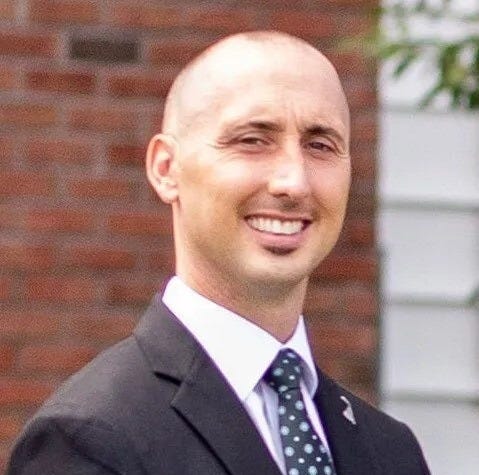Every Funeral Has a Director
How do people who deal with death of every day not allow death to overwhelm them?
Major in journalism and at some point a professor is going to hand you a copy of Jimmy Breslin’s column from the New York Herald Tribune on Nov. 26, 1963. It’s an amazing piece of work that Breslin turned in, a column where he followed the Arlington National Cemetery workers responsible for digging the grave and burying President John F. Kennedy.
And, for an undergraduate journalism student, it’s a reminder of how you will never write anything as well as Breslin did in that piece. You deserve to read it and understand the disappointment of every budding journalist in America.
Pollard is forty-two. He is a slim man with a mustache who was born in Pittsburgh and served as a private in the 352d Engineers battalion in Burma in World War II. He is an equipment operator, grade 10, which means he gets $3.01 an hour. One of the last to serve John Fitzgerald Kennedy, who was the thirty-fifth President of this country, was a working man who earns $3.01 an hour and said it was an honor to dig the grave.
It’s this paragraph that brings us back today, in a way. One of the first things we did at Dirt Nap was start to break down the traditions of dying and death. The wake or callings hours, where time passes with all the speed of the person trying to find the milk with the latest expiration date at the grocery store. Pallbearing, the grim task assigned to people of carrying a box with a dead body in it. Planning a funeral. Cremation. End-of-life doulas.
We got away from that for a little bit, but I want to come back to the people and processes of death and all of the surrounding industries.
Think about the last time you were at a funeral or wake. You probably don’t want to relive the experience, but if you put your mind to it, you’d likely recall that there was a lot of men with gray hair wearing suits — the field is overwhelmingly male and the average age of a funeral director is about 48. Some of the younger ones might hold the door or help women to their vehicles; on the day of the funeral, they might be the ones helping to lift the caskets or standing. But the person in charge is very likely far into middle age.
Being a funeral director isn’t a young(er) person’s game. It’s not like accounting or education, where every college and university offers a major. There are only four institutions in New York accredited by the American Board of Funeral Service Education1. It seems like one of those professions you have to want to do.
In New York, funeral direction is a regulated industry and you must have a license. According to the Department of Health:
You must attend an accredited mortuary school, register with the Bureau as a funeral director student, and graduate. You must also pass the National Board Exam given by the Conference of Funeral Service Examining Boards. The Bureau must receive original, certified copies of both the transcript and the passing board scores in order for you to begin a registered residency. You must serve a 12-month post-graduate residency at a New York State registered funeral firm under the supervision of a licensed and registered NYS funeral director. Eight months into the residency, you will be eligible to take the next scheduled NYS Funeral Director Law Examination. Once you have a passing score and you complete your residency, you will then become a licensed Funeral Director in the State of New York.
And it’s a growth industry, which stands to reason. There’s always a need for doctors, as people are always going to get sick. And there’s always going to need to have funeral directors, as death is an inevitable fact of life. The U.S. Department of Labor sees a 4% growth in hiring in this industry between 2023 and 2033.
I was taking a shortcut through through the backstreets of my town recently in an attempt to dodge traffic tie-ups near a busy intersection. As I drove past a church, I noticed a hearse and limousines in their familiar arrangement to facilitate easy entry and exit for the guest of honor and related participants in a funeral mass. Leading the arrangements was Matt Vincentini.
Matt breaks the demographic mold. He doesn’t have gray hair; his head is shaved. He is now in his 40s, but has been a licensed funeral director at Buranich Funeral Home in Camillus for more than 20 years. He was kind enough to answer some questions about the industry and his career path.
I want to start by asking how you landed on funeral director as a career. I mean, it seems like there aren’t a lot of people who dream of being one when they grow up.
I often say that becoming a funeral director found me rather than the other way around. I grew up in a close-knit community where I witnessed the profound impact that loss has on families. After a personal experience with grief and seeing how compassionate care could help in those moments, I felt a calling to serve others during their most challenging times. It’s a unique profession, but I realized it was about offering support and making a difference in people's lives.
What did training and school look like for that?
Training to become a funeral director typically involves completing an accredited mortuary science program, which includes courses in anatomy, grief counseling, and business management, among others. After that, you must pass the National Board of Funeral Service exam, and then there’s usually an apprenticeship component where you gain hands-on experience under the supervision of an experienced funeral director. Following this you then must pass a NYS License Exam.
It’s a rigorous process, but it equips you with the necessary skills to handle the various aspects of the profession.
Do you remember the first funeral you conducted? What struck you about the process and made you realize that this was the career for you?
I vividly remember my first funeral. It was a small service for an elderly gentleman who had lived a rich life. What struck me was the sense of community and the way the family came together to honor him. It was a powerful moment that reaffirmed my choice of career; I realized I could provide comfort and support during such a pivotal time in people's lives.
What’s a typical day like for you?
A typical day can vary greatly. I might start the morning by preparing for a service, meeting with families to discuss their wishes, and handling logistics. There are also administrative tasks, such as paperwork and coordination with different service providers. No two days are the same, which keeps the work engaging.
You’ve no doubt seen some things in your work. I’m not asking you to break confidentiality or rank the worst, but can you think of one case that has really stuck with you over the years?
One case that stands out involved a young child. The family was heartbroken, and the loss was palpable. While I can’t share details, the way the community rallied around them was incredibly touching. It reminded me of the importance of support networks and the impact a caring community can have during such tragic times.
Everyone experiences grief differently. You work with it every day. How do you keep your mental and emotional health strong without getting lost in the sadness of what’s around you?
I’ve learned the importance of self-care over the years. I make it a point to take breaks, engage in hobbies like golf, and connect with friends and family. I also find that talking about my experiences with colleagues who understand the unique challenges of our work helps me process my feelings.
Similarly, how do you express caring and sympathy to a family in mourning without getting immersed in the emotions of their loss?
It’s important to create a balance. I approach each family with empathy and compassion while maintaining a professional demeanor. Active listening and providing a safe space for them to express their feelings allows me to connect without becoming overwhelmed by their grief.
Funeral directors seem to be on call 24/7. What do you do to disconnect from death and turn off that portion of your life?
I ensure to set boundaries for myself. When I’m off-duty, I engage in activities that bring me joy and relaxation, like spending time with my wife and children, golfing, or even taking a vacation. It’s vital to have those moments away from work to recharge and maintain perspective.
There are a lot of religious rituals and ceremonies attached to death, and I’m sure you’ve seen nearly all of them. I’m a little cynical about organized religion, but a funeral service is often a beautiful celebration of a person. Are there facets of religious services that you appreciate more than others, or you think have the most meaning?
Each religious service carries its own beauty and significance. I find that the rituals often provide families with a sense of comfort and structure during an unstructured time. The communal aspect of these ceremonies can be particularly moving, as they bring together family and friends to celebrate a life lived.
After all these years on the job, do you look at death differently now than you did when you were younger?
After all these years, my view on death has evolved. I see it as a natural part of life, and I’ve come to appreciate the importance of celebrating life rather than solely focusing on loss. Each experience has deepened my faith, understanding of the fragility of life and the need to cherish every moment.
Final Thoughts on Finality
Dirt Nap is the Substack newsletter about death, grief and dying that is written and edited by Jared Paventi. It’s published every Friday morning. Dirt Nap is free and we simply ask that you subscribe and/or share with others.
We are always looking for contributors and story ideas. Drop us a line if you have interested in either space at jaredpaventi at gmail dot com.
I’m all over social media if you want to chat. Find me on Facebook and LinkedIn. I’m also on Bluesky, and doom scroll Instagram at @jaredpaventi.
If you or someone you know is in crisis, call or text 988 to reach the Suicide and Crisis Lifeline or chat live at 988lifeline.org. For additional mental health resources, visit our list.
Some of them are online programs and I cannot for the life of me imagine what an online embalming class must look like.








When Paul Wieland joined the faculty in '98, he made it a point every year to track Bona's 1099s. Rich Lee and Anne Lee have continued that.
Interesting. The field might become younger and female. The daughter of one of my favorite students (whom you may know, 'cause she's an '01 grad) is now attending mortuary school in Pittsburgh. She wants, eventually, to own her own mortuary business. She told me half the courses she'll take cover the business aspects of running a mortuary.